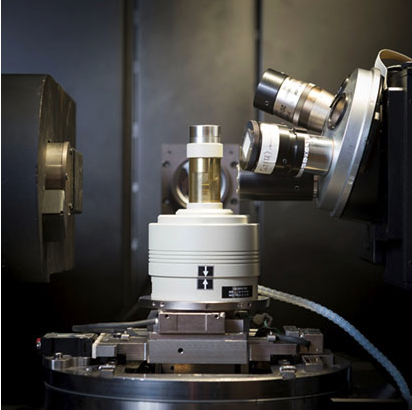Members Login

Channels
Special Offers & Promotions
Deben Reports on a New Publication from Scientists at La Trobe University in Australia Where their CT500 stage is Used in Micro Scanning Tomography Experiments to Better Understand Ceramic Matrix Composites Under Load
 Deben, a leading provider of in-situ testing stages together with innovative accessories and components for electron microscopy, reports on a publication in Microscopy & Microanalysis from the La Trobe Institute for Molecular Science.
Deben, a leading provider of in-situ testing stages together with innovative accessories and components for electron microscopy, reports on a publication in Microscopy & Microanalysis from the La Trobe Institute for Molecular Science.
This shows a Deben CT500 tensile and compression stage being used in conjunction with a ZEISS Xradia Micro XCT system to enable a better understanding of ceramic matrix composites under various tensile bending loads.
Dr Benedicta Arhatari is X-ray Tomography Laboratory Manager at the ARC Centre of Excellence in Advanced Molecular Imaging at the La Trobe Institute for Molecular Science. Her responsibilities include the day-to-day operation of the x-ray source, the construction of imaging experiments and the use of appropriate position-sensitive x-ray detectors while her research focus is on the development and testing of the theory for optimising phase imaging performance.
The Laboratory uses a ZEISS Xradia µXCT system which is configured with a fixed X-ray source that passes a cone of X-rays through the specimen. The transmitted X-rays are then captured by an imaging detector. Projections through the sample are collected by rotating the specimen from -90° to +90°. These projected images are later combined and reconstructed using algorithms to build a 3D image of the sample. Samples may be studied under tension or compression using a Deben CT500 in situ stage configured with 4-point bending clamps and controlled from the comprehensive, integrated MICROTEST tensile stage control software which offers a wide range of control functions and a live display of load versus extension.
Dr Arhatari, with co-workers from the University and the Defence Science and Technology Group in Melbourne, has recently published a paper entitled “Local Structural Damage Evaluation of a C/C-SiC Ceramic Matrix Composite.”1 It reports on the importance of the local distribution and concentration of SiC and its effect in reducing the toughness of the ceramic matrix composite using data gathered from the Deben-Xradia combination. The images in the paper show very detailed visualisation of the crack propagation process with the three-dimensional capability enabling clear difference in crack behaviour depending on the plane being studied.
The authors concluded that the key finding from the present study (combining radiography, µXCT and four-point bend testing) showed that the process of fibre pull-out in C/C–SiC CMCs can be linked to the material toughness. Furthermore, the present study combining load testing and X-ray microscopy highlights how important the local variations in these parameters can be in determining the overall strength of these complex composite materials.
The Deben CT500 in situ testing stage is versatile and adaptable. With a weight of less than 1.0 kg, it is suitable for mounting within the most common mid-range µXCT systems such as the Nikon XTH-225, ZEISS/Xradia Versa and GE v|tome|x as well as the “nano” systems such as the ZEISS/Xradia XCT-200 and GE Nanotom S.
Media Partners


